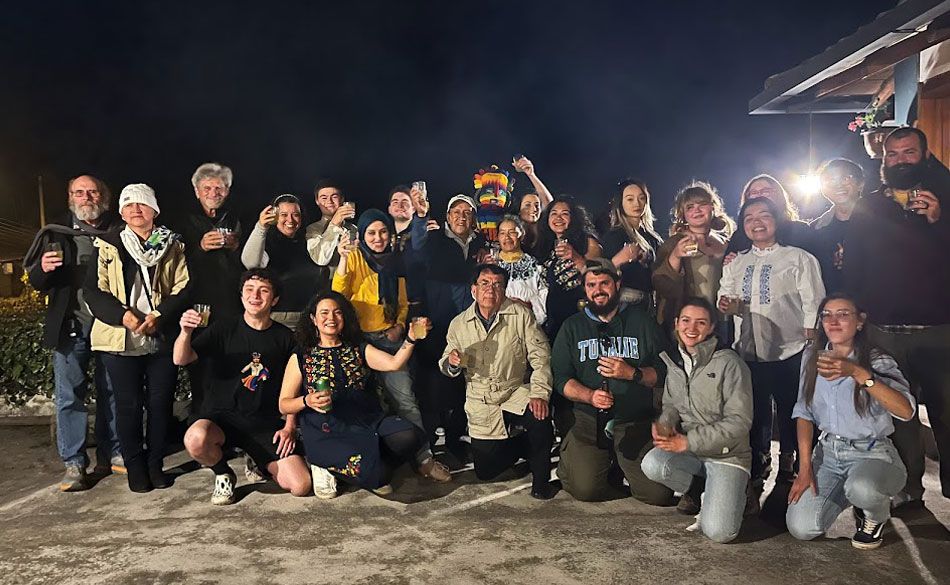By: Adela Elizarrez
I participated in the Proyecto Arqueológico Zuleta (PAZ) in Ecuador over the summer which focused on the Zuleta region, located north of the country’s capital of Quito. Zuleta is nestled within the northern highlands of the Andes region and surrounded by beautiful mountain ranges. This project focused on earthen mound structures that were built by the pre-Incan civilization known as the Cara or Caranqui people. These mound structures are located within a Spanish Colonial Hacienda, known as Hacienda Zuleta, which is home to the highest concentration of these earthen mounds and ramp-mounds structures known as tolas. There are over 140 tolas located at this site, and are a product of the Caranqui civilization.
The Hacienda Zuleta is where we worked on a tola designated as Mound EE, excavating at a stratigraphic level that dated between 1250-1500 A.D. What we found during our excavations were ceramic vessels, obsidian and stone tools, and other cultural materials. The project is still ongoing so unfortunately, I am unable to reveal much more information, but I have provided some photos of other recovered ceramics that belong to the Caranqui that were found nearby.
Although learning archaeological methods and learning how to apply such methods in the field were my main goals for attending this field school, I was surprised with the immersive experience I encountered while being in Ecuador. I was in acountry that I was not familiar with, and participating in an unfamiliar culture as well, so it was a bit challenging at first. I ran into slight culture shock due to delving into the culture head on; however, I was pleasantly surprised by how much I enjoyed getting to know the people of Zuleta, their customs and traditions, all while learning of their history which the local people of Zuleta are still learning of themselves.
What was most fascinating was witnessing the remnants of their cultural practices still present today, and seeing such practices revealed in the tasks that the people of the region continue to do. In Zuleta, you’ll see women drying out their corn, or maize, a sacred crop of the ancient people of Ecuador, which they still use for cooking and for fermenting beverages. One such beverage is called Chicha, which is an ancient Andean ceremonial drink still consumed today. We learned to make Chicha with our host and partook in consuming a modern-day version of it made with pineapple.
We also visited a museum in Angochagua, a town located near Zuleta, and learned that there is still a family that makes traditional pottery with the natural ingredients that surround them. This pottery-making method has been passed down for generations within this family, and were told that this was a connection this family had with their ancestors. It is a tradition they wish to keep alive and to pass down to other locals.
Being able to have such experiences of learning of a different culture that is continuously thriving while at the same time rediscovering their past has had me reflect on my own culture. As a Mexicana, I see similarities within both our cultures for the want and need to learn of our ancient pasts and ancestry. These connections in understanding our history and prehistory are vital in understanding who we are today and why we practice and do what we do. I feel it’s important work to be able to reveal such histories to a culture that wishes to learn more, and I feel honored to be able to participate in a project that can contribute to that. Overall, I had a life changing and humbling experience during my stay in Zuleta, making friends throughout the town and through the program along the way. I hope to someday continue such work in Ecuador in the near future, as the overall experience can be enriching for all involved. 